On a quiet stretch of state highway located some 60 miles southeast of St. Louis, blink and you’ll miss the sign that announces you’ve entered Old Mines. The unincorporated area in Washington County, Missouri, is dotted with small towns and tiny hamlets, and at the community’s heart is St. Joachim’s Catholic Church. At first glance, there’s not much else here, but just beneath the sleepy rural facade is a rich linguistic history that dates back centuries.
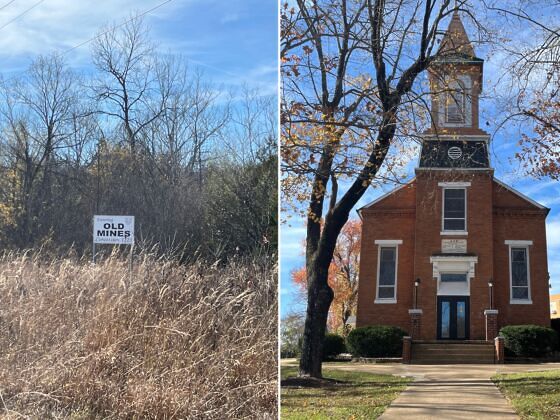
This Endangered Missouri Language Is Named After a Tree

St. Joachim’s Catholic Church. Photo: Erika Ebsworth-Goold
Many who live in Old Mines today are descendants of French settlers who first arrived nearly 300 years ago. They trapped furs, farmed, and mined the land of its rich mineral deposits. And as they made the area their home, those settlers developed their own form of French, adopting new words and phrases that drew upon many influences, including Spanish, English, and Native American languages. A far cry from what many of us learned in school, it is its own distinct dialect.
The fight is now on to wrestle that Old Mines French—nicknamed Pawpaw French for the fruit-bearing trees that grow in the area—back from near-extinction. Linguists, historians, and artists are all doing their part to make sure the patois found only in this little slice of the state can stay alive for future generations.
Preserving and remembering Old Mines French
In 1720, Philippe François Renault arrived from France and settled the area. Renault and his team found and smelted lead throughout Old Mines. The French they spoke evolved with them.
“When those settlers saw something they had never seen before out here, they had to call it by some name. And they were storytellers. So, if they didn’t know, they made it up,” explains Cindy Merx, whose husband traces his ancestors back generations in Old Mines. “This is Old Mines French. It has its own dialect, its own words.”
Old Mines’ isolation helped to cement its heritage. The land is bluffy, rugged, tough to tame; people who lived there stayed there. They depended on each other and kept free from outside influence for nearly 200 years. Families spoke their own form of French at home, as did priests at St. Joachim’s, and children were taught the language in school.
But at the turn of the 20th century, a perfect storm of societal change began to erode the tightly kept traditions. Mines were depleted, and men left to find work in an outside world that ridiculed the way they spoke. Schools began teaching only English due to a state mandate in 1888, and priests at St. Joachim’s also gave up French. By the time construction on Highway 21 started in 1922, connecting the area to St. Louis directly, the assimilation was well on its way. It took just a generation for Old Mines French to fade from daily life. Starting in the 1930s, researchers began to visit the area to document what they could of the vanishing language and folktales; locals also tried to engage their elders in the 1970s, when it became sadly apparent there was limited time to do so .
“It was hard because as we tried to get this out of the older folks, many of them would refuse to talk about it,” said Merx. “They wouldn’t speak the language at all, because it was stressed to them as children that they would be looked down on for speaking French.”
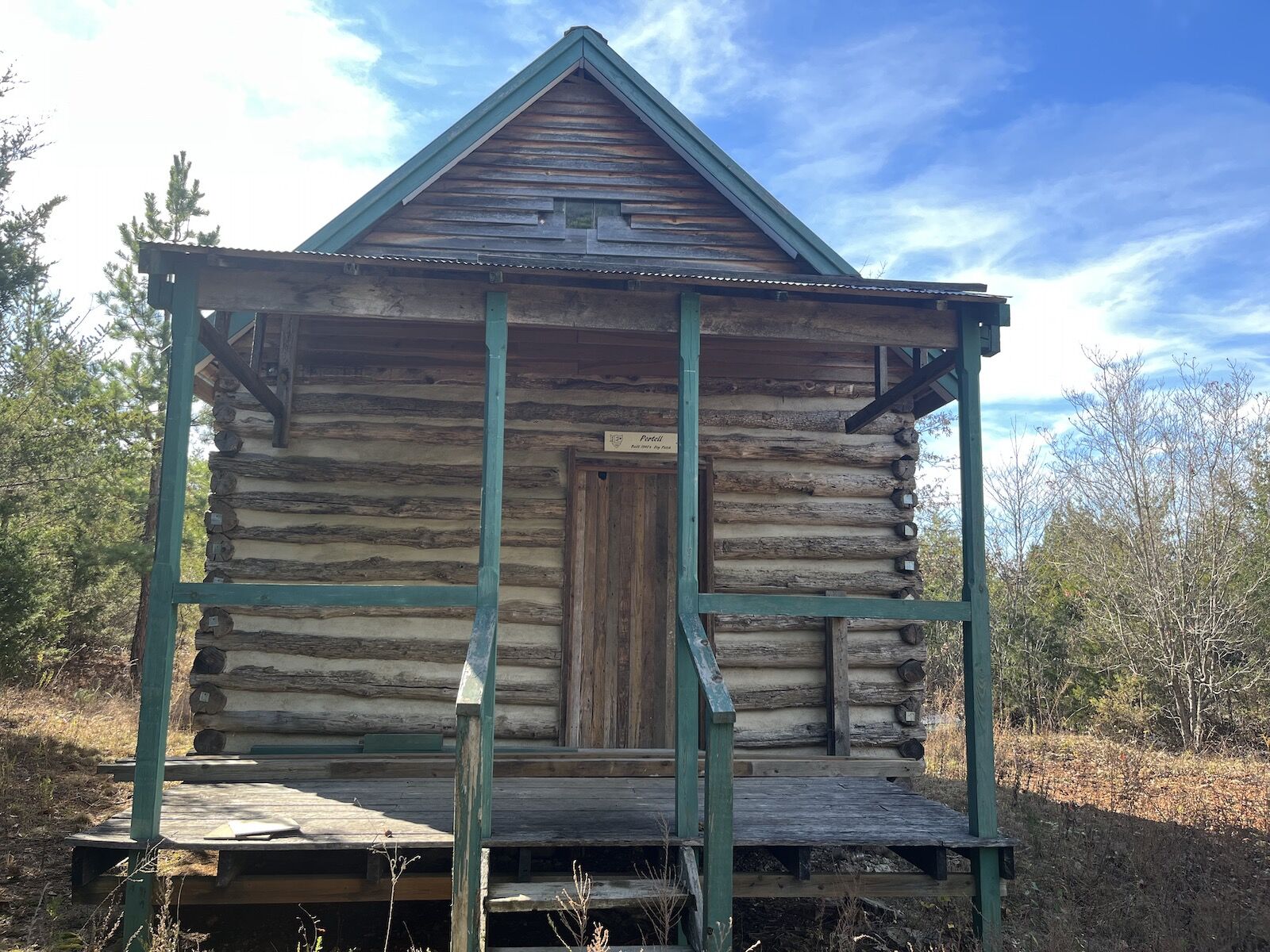
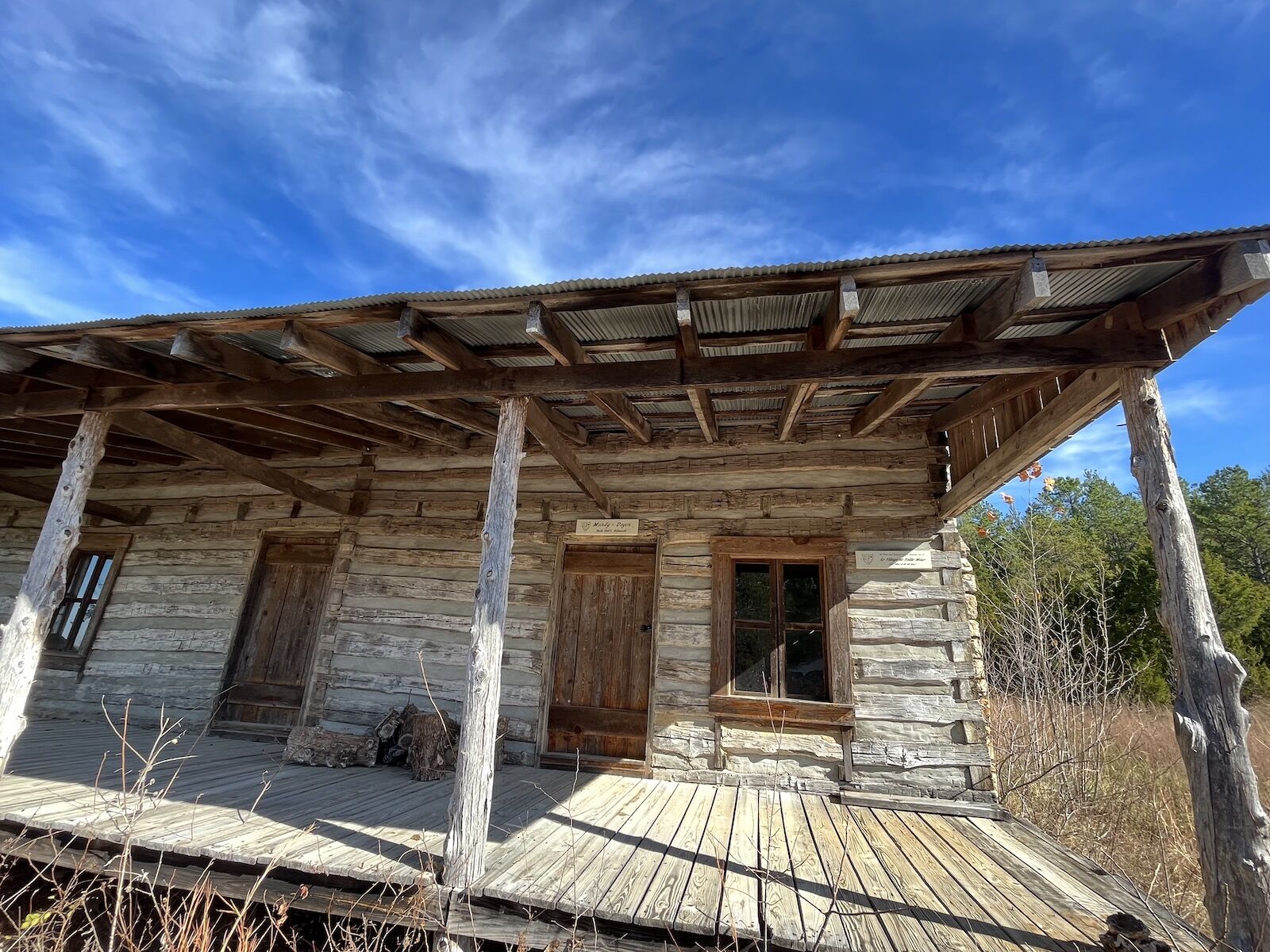
As president of the Old Mines Area Historical Society, Merx and other volunteers have tried to preserve the local heritage. The group has saved a handful of original Old Mines log cabins dating back to the 1800s. They’ve restored and relocated them to a parcel of land that sits atop a former barite mine. The goal is to re-create an historic village to represent what Old Mines might have looked like in its earlier days.
The group also holds a fête every autumn. During the party, crowds gather to celebrate and reconnect through music, dancing, crafts, and plenty of traditional food. There’s also storytelling, designed to revive Old Mines French — a labor of love that Merx says is well worth the effort.
“We don’t want these things to be lost, and we don’t want them to disappear. It’s who we are, and who our families have been. It’s like taking your grandma’s good china and throwing it out because it’s not needed anymore,” Merx said. “But you don’t do that. It’s the same with our language. You keep it, and you treasure it. That’s what we’re trying to do.”
An outsider on a quest to keep Old Mines French going
As a child growing up near Vincennes, Indiana, Dennis Stroughmatt heard tales of the French fur traders who once populated the area. He developed an intense curiosity about the land known as Illinois Country, a vast swath of French settlement that stretched across portions of what is now the American Midwest.
“I continued to be interested in the culture and the history of the area,” he explains. “I couldn’t leave it alone.”
Later, while attending Southeastern Missouri State University in the early 1990s, he struck up a conversation with a professor about the state’s French roots. He asked what had happened to the language, and to the people who had once spoken it fluently.
“He told me ‘If you really want to find out more, you need to go to the place where people are still speaking French in large numbers.’ And that’s how I found out about Old Mines.”
A road trip quickly followed. At the time, Stroughmatt knew only a few words of French. He stopped at a small general store in Old Mines..
“I asked a woman inside where the French were. She told me ‘You found us.’ I then asked her if she spoke French and she said ‘Yes, but it’s probably not yours.’”
It wasn’t.
“Primitive but picturesque” was how researcher and language scholar J.M. Carrière referred to it in a 1939 academic paper, written after he’d conducted extensive interviews in the Old Mines region. There are significant differences between the patois he found and standard French. Among the most striking are the words that are Anglicized. In French, “game” is “jeu” or “partie”. In Old Mines French, it’s “guime”. And skillet, that old standby in every Old Mines kitchen? In standard French it’s “poêle”. The Old Mines version is “esquilette”.
There are grammatical differences, too. Some of the irregular verbs are conjugated differently, giving the patois a sound and cadence all of its own.
Soon enough, Stroughmatt was learning Old Mines French firsthand. He met with residents who patiently answered his questions and connected him with others in the community. The young man found himself spending every weekend away from university in Old Mines, and became a fixture in the area. He had just taken up the violin and started to play fiddle at house parties — or “bouillons” as they are known there — and began to pick up the elusive patois the locals called Pawpaw French.
“I learned the language through the songs,” he said.
The relationship has lasted decades. In 1997, Stroughmatt was asked to sing and play at the fête and he now returns year after year. As Stroughmatt became a musical ambassador for the language he loves so much, many of the people he first learned from passed away. It’s been difficult, but he takes comfort in knowing that he’s keeping parts of their tradition alive through music. And when he’s not on the road performing, Stroughmatt teaches at Wabash Valley College in Illinois. He plans to offer a class in Old Mines French there soon.
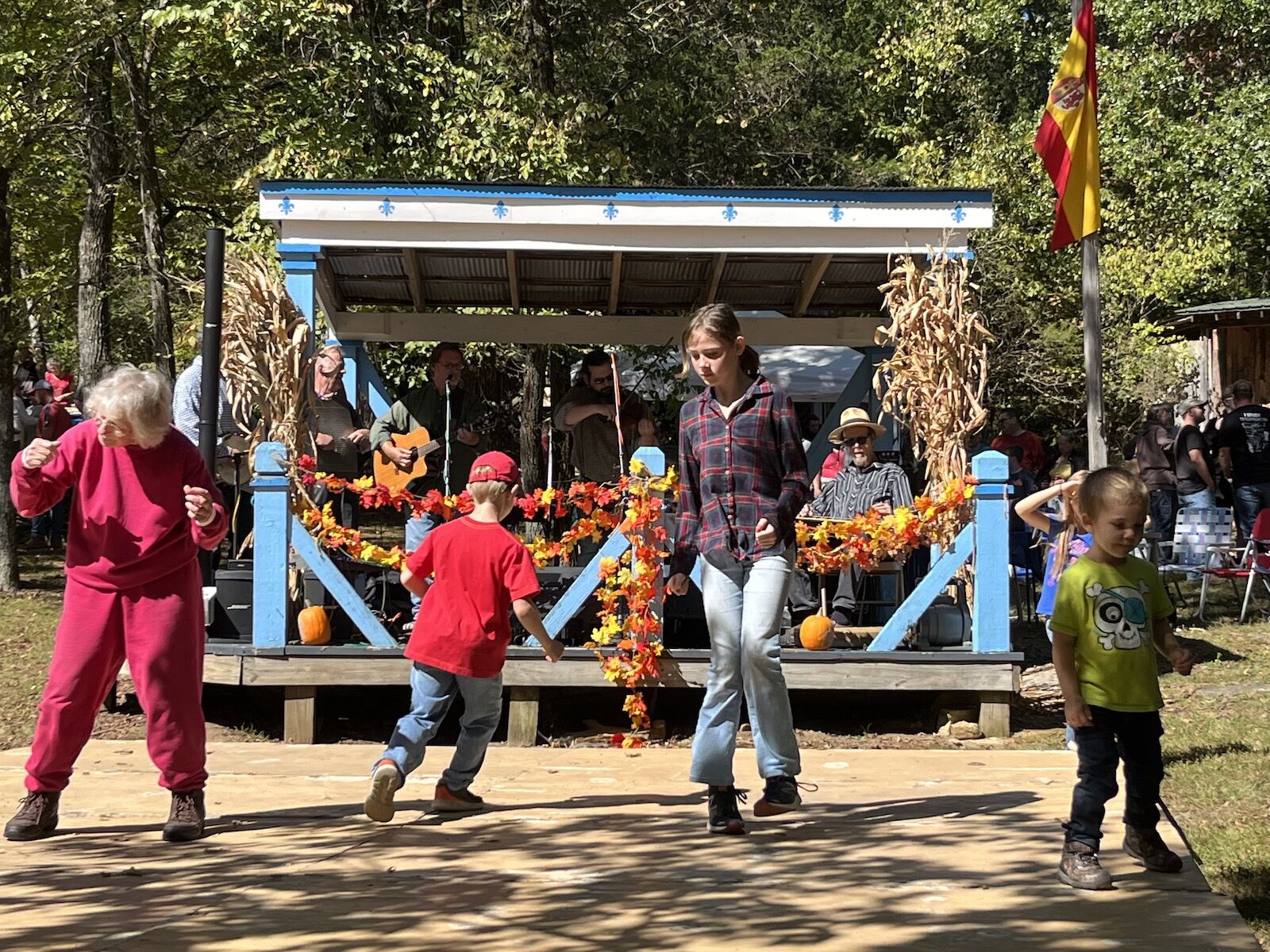
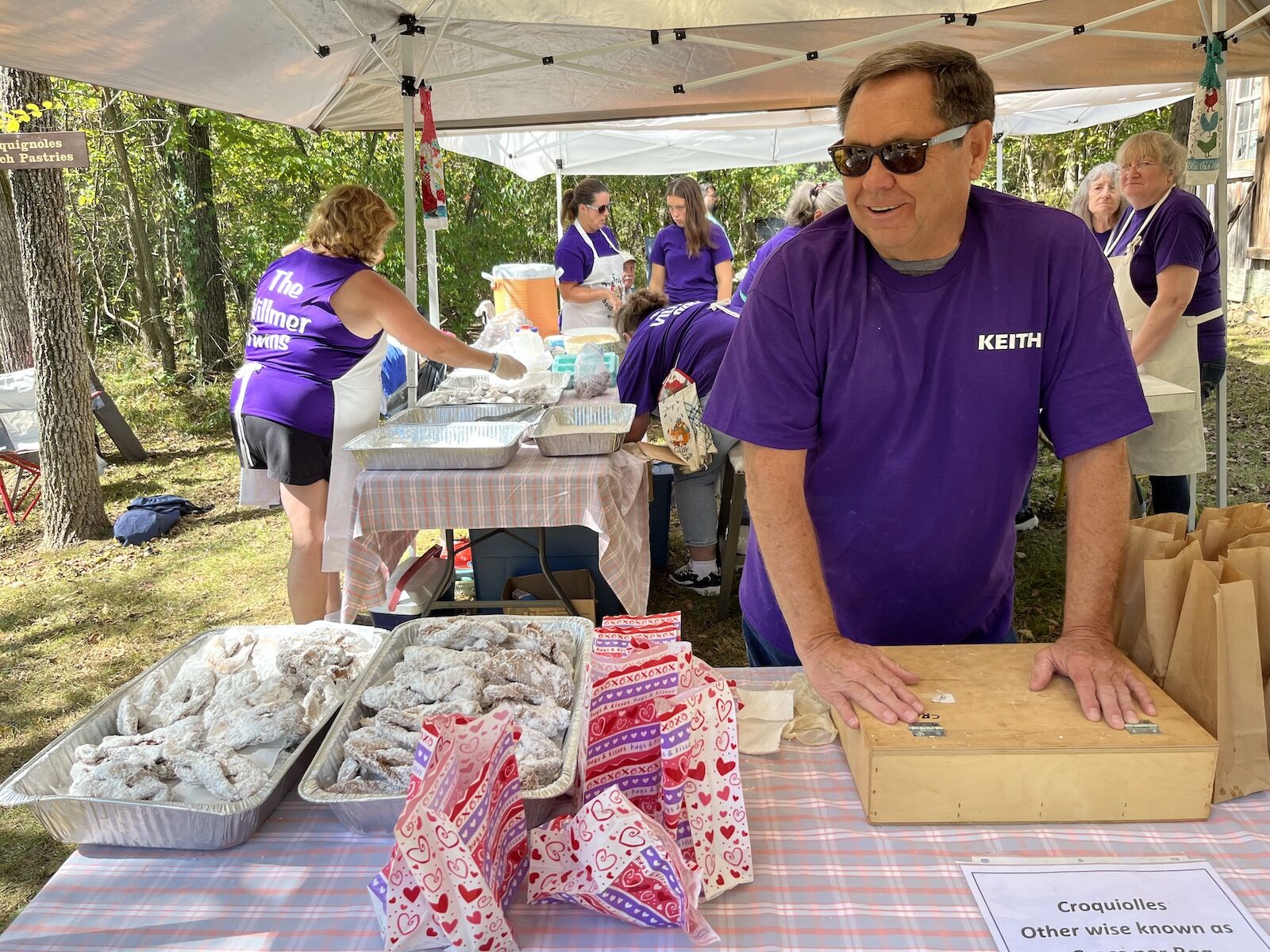

“I’m just one guy trying to do what I can,” he said. “For a language to exist, it has to exist in the community. It’s fine if it’s just there on paper, or on a recording, but if it’s not actively being used, it dies. It continues in the spoken word, and that’s how it’s survived so far. It’s still here. Even after nearly 300 years.”
Keeping Missouri French alive through storytelling
Artist, illustrator, and University of Kansas lecturer Brian Hawkins stumbled upon Old Mines French after completing his undergraduate studies in 2011 examining ragtime, another cultural phenomenon with deep Missouri ties.
“I was looking in my university library in a section devoted to folklore and history,” said Hawkins. “I found a book, Tales from the French Folk-lore of Missouri and started leafing through it. I was pretty blown away by the fact that there were people in the 1930s who were able to tell folk tales in French in Missouri. I didn’t really know Missouri had these French roots.”
As it had with Stroughmatt years before, a chance discovery at college launched a road trip, and Hawkins also headed to Old Mines.
“The more I spoke to people, and the more people I met, the more I became interested in the history of the community.”
Hawkins, whose art meshes audio clips with stunning visuals, accessed archival recordings of past Old Mines residents reciting their folktales. He knew they would be the perfect fit for his style of storytelling.
“Everyone enjoys watching an animated film, regardless of their age,” said Hawkins. “When there’s an effort to revive a language, I think it makes sense to capture that in animation. You can use archival audio of a native speaker, and you can have visuals so people can follow along. It’s easy to add subtitles. The people in Old Mines were supportive of that idea, and that was how my project started.”
Hawkins is currently working on a full-length feature documentary about the people of Old Mines and their folktales. Like Stroughmatt’s music, it’s an approachable way to learn more about Old Mines French.
“If you hear some of the songs Dennis [Stroughmatt] sings in the archive, they are usually a cappella, a very different format from the way he’s performing today,” Hawkins said. “He’s combined them with the fiddle tradition and created a hybrid that’s beautiful, easy to engage with, and can get people excited about learning the language. We’re working in a similar way to keep it relevant.”
“It’s Not Gone Yet”
2023 marks the 300th year since the French first made their way to Missouri. With that commemoration comes big plans to celebrate in Old Mines. The party kicks off on New Year’s Eve with La Guiannée, a medieval French tradition featuring singers going door to door, ringing in the new year. A dinner dance will be held, the Historical Society will host an open house, and the fête will be back, bigger than ever.
And while there’s a renewed resolve to keep the language alive, from time to time there are surprising glimmers proving it isn’t a thing of the past quite yet.
“People try to put the nail in the coffin of our French and say ‘That’s it, nobody speaks it. It’s done.’, says Stroughmatt. “But I was in Jefferson City last year to perform at the Missouri Humanities Council and the son of an Old Mines fiddler showed up. He spoke to me in perfect Old Mines French. We talked for an hour.
It’s not gone yet.”